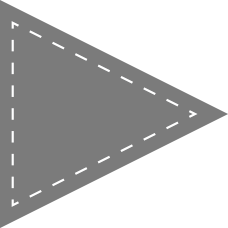




 第四节
第四节
对偶是汉语特有的修辞方式,这种修辞方式可使文句形式上工整,结构上匀称,视觉上醒目,听觉上悦耳,有很强的感染力。这种修辞格式在六朝时发展到极致,从而形成了重视声韵和谐、辞藻华丽的骈体文。《黄帝内经》中对偶修辞法的运用则比较灵活多样,不似六朝骈体那样讲究辞藻。
例1:拘于鬼神者,不可与言至德;恶于针石者,不可与言至巧(《素问·五脏别论》)。
本例是一则典型的对偶句式,字数相同,结构一致,表述一体。这里的“拘”是“拘守”的意思,所谓“拘于鬼神者”(those who are superstitious and believe that diseases are caused by ghosts or spirits)就是迷信鬼神的意思,认为疾病是由鬼神作祟而引起的;“至德”(abstruse theory ofmedicine)指“至深的道理”,所谓“不可与言至德”(it is improper to talk about the abstruse theory ofmedicine with them),就是不能与之讨论至深的医学道理;“至巧”(excellent therapeutic methods)指精巧的医疗技术,所谓“不可与言至巧”(it is improper to discuss excellent therapeutic methodswith them),就是不可以与之讨论精巧的医疗技术。
一些翻译人员不了解此句之寓意,翻译时按字释义,往往使译文文理浑漫不清。Veith将这句话翻译为:Those who would restrain the demons and the gods(good and evil spirits)cannot attain virtue by speaking about it;and thosewho dislike acupuncture cannot achieve ingenious results by speaking about them.比较原文和译文,未尽之意不言自明矣。
例2:草生五色,五色之变,不可胜视;草生五味,五味之美,不可胜极(《素问·六节藏象论》)。
本例既使用了对偶,也使用了联珠的修辞格式。关于联珠修辞格,下文将另作讨论。这里所谓“不可胜视”(unable to observe all)指看也看不尽的意思;所谓“不可胜极”(unable to taste all)指尝也尝不尽。海外译者对此之理解,常有悖于原意。Veith将其译为:Grass and herbs bring forth the five colors;nothing that can be seen excels the variations of these five colors.Grass and herbs also produce the five flavors;nothing excels the deliciousness of these five flavors.整个译文的意思还是比较清楚的,但对“不可胜视”和“不可胜极”的翻译,却不大符合原文之意,因之颇值商榷。
Ni将其翻译为:In the plant kingdom there are the five colors.Within the five colors there are variations in tone.The plants have five flavors.Though distinct,there are also variations of the flavors.比较原文,译文的意思似乎更加难以琢磨。